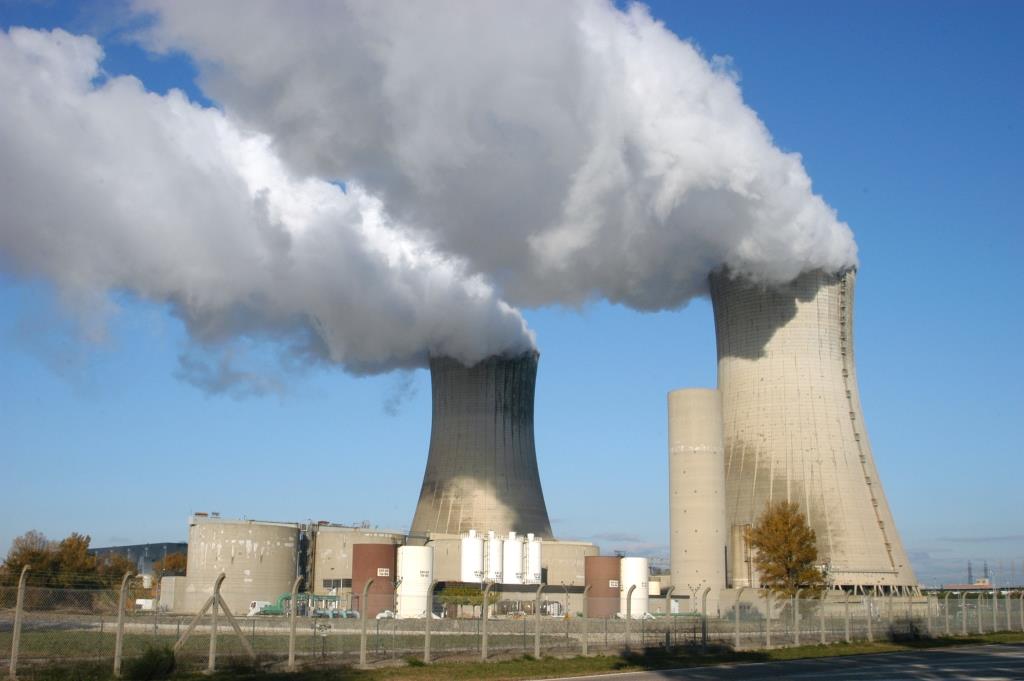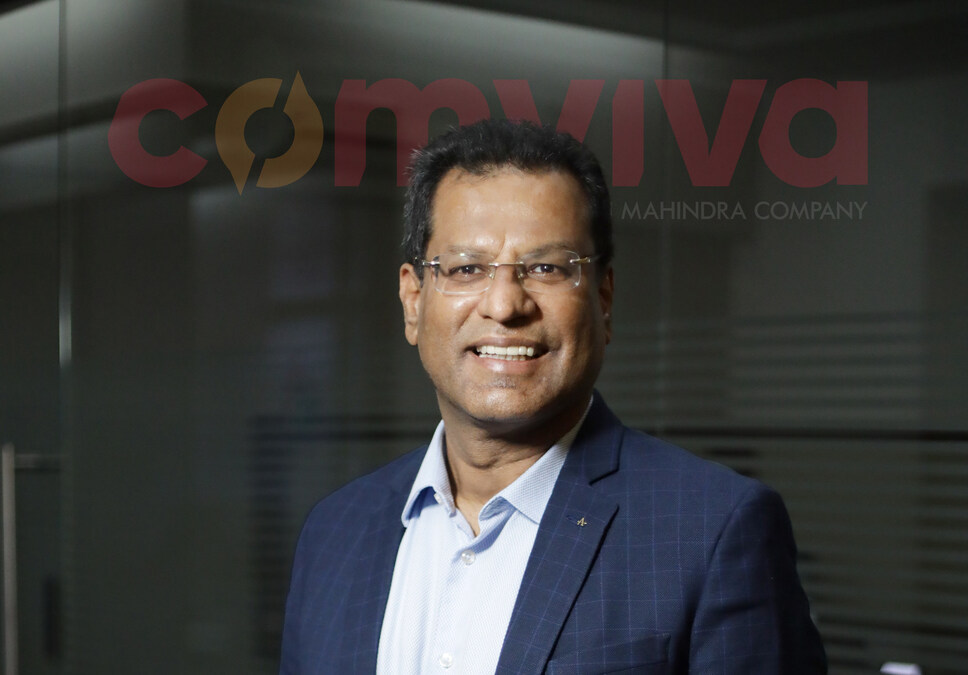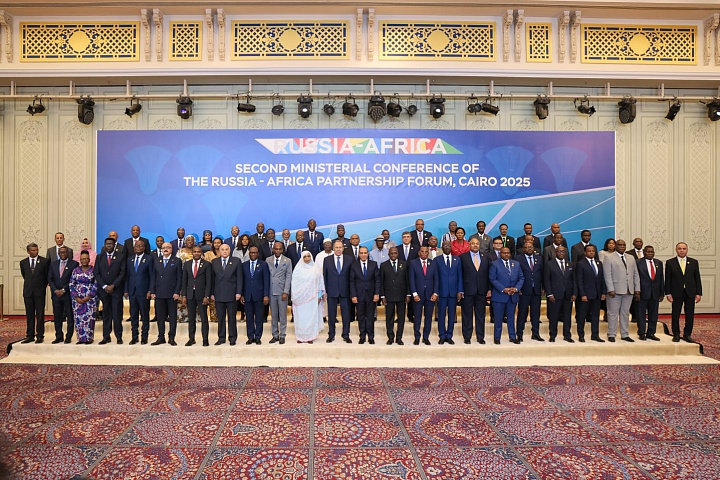World
Russia’s Promise of Building Nuclear Plants in Africa

By Kester Kenn Klomegah
For more than two decades, Russia has been struggling to help Africa overcome its energy deficit, with little success.
But now, with financial support from the European Union (EU), two international organizations have been chosen as modelling partners for the development of the African Continental Power Systems Master Plan (CMP).
The two organizations will lead the development of an electricity master plan that promotes access to affordable, reliable and sustainable electricity supplies across the continent.
As expected, African stakeholders will play roles in identifying surplus and deficit regions/countries, in terms of electricity generation and demand, as well as the most cost-effective ways of expanding clean electricity generation and transmission infrastructure across Africa.
African energy ministers tasked the African Union Development Agency (AUDA-NEPAD) to lead the development of the master plan. Following a two-year consultation process coordinated by the EU Technical Assistance Facility (TAF) for Sustainable Energy.
Eastern and Southern Africa are vast, geographically diverse regions with rapidly growing populations and rising demands for energy, according to the master plan, there are two regional power pools.
A new study entitled Planning and Prospects for Renewable Power: Eastern and Southern Africa assesses the long-term energy plans for the two regional power pools (known as the Eastern and Southern African Power Pools), and finds the region well-endowed with high quality, cost-effective, but under-utilized wind and solar resources.
In practical terms, Africans are looking for energy alternatives to embark on the next round of industrialization. Russia’s nuclear energy diplomacy in Africa has been at the crossroad over the past two decades since the collapse of Soviet-era.
In order to find long-shelf solutions to chronic power shortages, African leaders and Governments, that have shown interest in adopting Russian nuclear energy, signed necessary legal documents but lacked the needed funds for prompt implementation and final realization.
Russia and Africa’s aspirations in this sphere of nuclear cooperation come with many challenges. In Rwanda and many other African countries, the first question is finance. “Rwanda’s annual budget stands at US$3 billion while the construction of the nuclear power plant would cost not less than US$9 billion which is equivalent to Rwanda’s entire gross domestic product,” David Himbara, Rwandan-Canadian Professor of International Development at Canada’s Centennial College, wrote in an emailed interview.
He said that Rwandan President Paul Kagame always believed that he must validate his supposedly visionary and innovative leadership by pronouncing grand projects that rarely materialized.
Currently, all African countries have a serious energy crisis. Over 620 million in Sub-Saharan Africa out of 1.3 billion people do not have electricity. It is in this context that several African countries are exploring nuclear energy as part of the solution.
There is only one nuclear power plant on the entire African continent, namely, Koeberg nuclear power station in South Africa. Commissioned in 1984, Koeberg provides nearly 2,000 megawatts, which is about 5% of installed electricity generation in South Africa.
According to Himbara, “Of all African countries that have shown interest in nuclear energy, none have so far gone beyond the stage of conducting a preliminary feasibility study, project costing and financing models, except South Africa.”
But, the South Africa US$76 billion deal with the Russians to build a nuclear power plant collapsed along with the Government of Jacob Zuma that negotiated the deal in secrecy, in fact when such corporate projects have to be discussed and approved by the parliament and necessarily have to pass through an international tendering process.
Russia and South Africa concluded an intergovernmental agreement on strategic partnership in the nuclear sphere in 2014. The agreement provided, in particular, for the construction of up to eight NPP power units.
“Nuclear waste will pile up, and where are they going to put it? The Sahara? The US is always trying to force nuclear waste repository on some poor or indigenous community and when that fails, the waste keeps piling up at the reactor sites, creating greater and greater environmental risks,” according to Himbara.
He underscored the fact that “managing nuclear waste and its safety is universally complex and dangerous. The Chernobyl disaster in Ukraine and Fukushima in Japan, remind the world of the human and environmental costs of nuclear power accidents. Millions of people are still suffering from radiation and radiation-related diseases till today.”
Foreign Minister Sergey Lavrov, in an interview with the Hommes d’Afrique magazine in March 2018, described Africa as rich in raw material resources, including those that are required for high technology and for moving to a new technological pattern. Apart from mining, Russia and African countries are cooperating on high technology.
What was more important for Africa’s energy sector when he informed that Rosatom has been considering a number of projects that are of interest to Africans, for instance, the creation of a nuclear research and technology centre in Zambia. Nigeria has a similar project. There are good prospects for cooperation with Ghana, Tanzania and Ethiopia. Talks are still continuing on the construction of nuclear power plants in South Africa.
Shadreck Luwita, Zambian Ambassador to the Russian Federation, informed that the processes of design, feasibility study and approvals regarding the project have been concluded, in the case of Zambia. The site of the project designated and it is envisaged that construction should commence, in earnest, not later than the second half of 2018. That construction remains a monumental dream, though.
In addition, he affirmed that the Russians envisaged technology transfer in the development of this massive project by way of manpower development capacity. For now, there are a few Zambian nationals, who are studying nuclear science in Russia.
The Zambian Government ultimately profitable hopes are that upon commissioning of this project, excess power generated from this plant could be made available for export to neighbouring countries under the Southern African Development Community Power Pool framework arrangement.
Zambians are still worried about Russia’s promise of nuclear plants estimated at US$10 billion. In February 2020, Chairperson of the Federation Council (the Upper House or the Senate), Valentina Matviyenko, headed a Russian delegation on a three-day reciprocal visit aimed at strengthening parliamentary diplomacy with Namibia and Zambia.
While in Zambia meeting with the president and other high-ranking legislators, she expressed regret at the suspension of the construction of a centre for nuclear science and technology due to financial issues. The request submitted to the Russian president needed careful consideration by the relevant ministries and departments. She hoped Russia and Zambia would jointly find options to promote funding to roll out the construction of a centre for nuclear science and technology.
This is not an isolated case. From all indications, Russia wants to turn nuclear energy into a major export industry. It has signed agreements with African countries, many with no nuclear tradition, including Rwanda and Zambia. In addition, Russia is set to build large nuclear plants in Egypt that could serve the Maghreb region.
Interestingly, Egypt’s dreams of building nuclear plants have spanned with the agreement that was signed (as far back in March 2008) during an official visit to the Kremlin by the ousted President Hosni Mubarak, and then again with former Egyptian leader Mohammed Morsi who discussed the same nuclear project with Vladimir Putin in April 2013 in Sochi, southern Russia.
During the dawn of a new era at the Sochi summit, Vladimir Putin and Abdel Fattah Al Sisi signed an agreement to set up four nuclear plants in El Dabaa, on the Mediterranean coast west of the port city of Alexandria, where a research reactor has stood for years.
The deal was signed on the heels of talks held between Putin and Al Sisi, where both expressed high hopes that Russia would help construct the country’s first nuclear facility. Egypt began its nuclear program in 1954 and in 1961, acquired a 2-megawatt research reactor, built by the Soviet Union.
However, plans to expand the site have been decades in the making that Rosatom will provide its fuel, personnel training, and build the necessary infrastructure. The four blocks of the nuclear power plant will cost about US$20 billion. Director Anton Khlopkov and Research Associate Dmitry Konukhov at the Center for Energy and Security Studies, co-authored a report to Valdai Discussion Club, that the success of Egypt’s nuclear project depends on three key factors.
These are the political stability and security situation in Egypt, a viable financing mechanism that reflects the country’s economic situation, and the government’s ability to secure support for the project among the local residents of El Dabaa, the site chosen for Egypt’s first nuclear plant back in the 1980s.
In reality, Ghana has similar never-ending dreams and fairy tales of owning nuclear plants. The agreement was re-signed on June 2, 2015. The Russian reactor, a 1000 MW plant, will cost a minimum of $4.2 billion. The financing scheme has not been finalized by the parliament. And it will take about eight to ten years from site feasibility studies to commissioning of the first unit, according to the Ghana Atomic Energy Commission.
As local media reported, Ghana’s quest to industrialize for economic growth and development has fast-tracked plans to establish nuclear power in the country within the next decade, which means by 2029 and export excess power to other countries in the West African sub-region.
With “One District, One Factory” – Ghana’s industrialization agenda might not be realized under Nana Addo Dankwa Akufo-Addo’s administration based on the roadmap of the nuclear power programme to commence construction by 2023 and inject nuclear energy into the grip by 2030.
The African countries’ MoUs and Agreements with Rosatom including South Africa, Nigeria, Ghana, Kenya, Rwanda, Tanzania, Zambia and the rest are, most probably, stacked. Nearly three decades after the Soviet collapse, not a single plant has been completed in Africa.
Some still advocate for alternative energy supply. Gabby Asare Otchere-Darko, Founder and Executive Director of Danquah Institute, a non-profit organization that promotes policy initiatives and advocates for Africa’s development, wrote in an email that “Africa needs expertise, knowledge transfer and the kind of capital imports that can assist Africa to develop its physical infrastructure, add value to two of its key resources: natural resources and human capital.”
Russia has respectable expertise in one key area for Africa: energy development. “But, has Russia the courage, for instance, to take on the stalled $8-$10 billion Inga 3 hydropower project on the Congo river? This is the kind of development project that can vividly send out a clear signal to African leaders and governments that Russia is, indeed, ready for business,” he said.
The renewable energy potential is enormous in Africa, citing the Grand Inga Dam in the Democratic Republic of Congo. Grand Inga is the world’s largest proposed hydropower scheme. It is a grand vision to develop a continent-wide power system. Grand Inga 3, expected to have an electricity-generating capacity of about 40,000 megawatts – which is nearly twice as much as the 20 largest nuclear power stations.
Ryan Collyer, the Regional Representative of Rosatom for Sub-Saharan Africa, told me in an interview in April 2021, that apart from energy poverty, nuclear can solve other continent problems, from low industrialization to advances in science, healthcare, and agriculture, thus propelling the continent towards the master plan of African Union’s Agenda 2063.
“It envisions Africa’s transformation into the global powerhouse of the future, so we are advocating a diverse energy mix that utilizes all available resources, including renewables and nuclear, to ensure climate resilience and environmental safety, social equity, and supply security,” Collyer said.
Some researchers and experts strongly believe and further estimate that the cost of building nuclear power, especially its associated high risks, does not make any sense when compared to the cost of building renewables or other sources of energy to solve energy shortages in Africa.
According to the company profile, Rosatom offers a complete range of nuclear power products and services from nuclear fuel supply, technical services and modernization to personnel training and establishing nuclear infrastructure. With 70 years of experience, the company is the world leader in high-performance solutions for all kinds of nuclear power plants. Rosatom has built more than 120 research reactors in Russia and abroad.
World
Comviva Wins at IBSi Global FinTech Innovation Award

By Modupe Gbadeyanka
For transforming cross-border payments through its deployment with Global Money Exchange, Comviva has been named Best In-Class Cross Border Payments.
The global leader in digital transformation solutions clinched this latest accolade at the IBS Intelligence Global FinTech Innovation Award 2025.
The recognition highlights how Comviva’s mobiquity Pay is helping shape a modern cross-border payment ecosystem that stretches far beyond conventional remittance services.
Deployed as a white label Wallet Platform and launched as Global Pay Oman App, it fulfils GMEC’s dual vision—positioning itself as an innovative payment service provider while digitally extending its core money transfer business.
The solution allows GMEC to offer international money transfers alongside seamless forex ordering and other services. These capabilities sit alongside a broad suite of everyday financial services, including bill and utility payments, merchant transactions, education-related payments, and other digital conveniences — all delivered through one unified experience.
“This award is a testament to Oman’s accelerating digital transformation and our commitment to reshaping how cross-border payments serve people and businesses across the Sultanate.
“By partnering with Comviva and bringing the Global Pay Oman Super App, we have moved beyond traditional remittance services to create a truly inclusive and future-ready financial ecosystem.
“This innovation is not only enhancing convenience and transparency for our customers but is also supporting Oman’s broader vision of building a digitally empowered economy,” the Managing Director at Global Money Exchange, Subromoniyan K.S, said.
Also commenting, the chief executive of Comviva, Mr Rajesh Chandiramani, said, “Cross-border payments are becoming a daily necessity, not a niche service, particularly for migrant and trade-linked economies.
“This recognition from IBS Intelligence validates our focus on building payment platforms that combine global reach with local relevance, operational resilience and a strong user experience. The deployment with Global Money Exchange Co. demonstrates how mobiquity® Pay enables financial institutions to move beyond remittances and deliver integrated digital services at scale.”
“The deployment of mobiquity Pay for GMEC showcases how scalable, API-driven digital wallet platforms can transform cross-border payments into seamless, value-rich experiences.
“By integrating remittances, bill payments, forex services, and AI-powered engagement into a unified Super App, Comviva has reimagined customer journeys and operational agility.
“This Best-in-Class Cross-border Payments award win stands as a testament to Comviva’s excellence in enabling financial institutions to compete and grow in a digitally convergent world,” the Director for Research and Digital Properties at IBS Intelligence, Nikhil Gokhale, said.
World
Russia Renews Africa’s Strategic Action Plan

By Kestér Kenn Klomegâh
At the end of an extensive consultation with African foreign ministers, Russian Foreign Minister, Sergey Lavrov, has emphasized that Moscow would advance its economic engagement across Africa, admittedly outlining obstacles delaying the prompt implementation of several initiatives set forth in Strategic Action Plan (2023-2026) approved in St. Petersburg during the Russia-Africa Summit.
The second Ministerial Conference, by the Russian Foreign Ministry with support from Roscongress Foundation and the Arab Republic of Egypt, marked an important milestone towards raising bilateral investment and economic cooperation.
In Cairo, the capital city of the Arab Republic of Egypt, Lavrov read out the final resolution script, in a full-packed conference hall, and voiced strong confidence that Moscow would achieve its strategic economic goals with Africa, with support from the African Union (AU) and other Regional Economic blocs in the subsequent years. Despite the complexities posed by the Russia-Ukraine crisis, combined with geopolitical conditions inside the African continent, Moscow however reiterated its position to take serious steps in finding pragmatic prospects for mutual cooperation and improve multifaceted relations with Africa, distinctively in the different sectors: in trade, economic and investment spheres, education and culture, humanitarian and other promising areas.
The main event was the plenary session co-chaired by Russian Foreign Minister Sergey Lavrov and Egyptian Minister of Foreign Affairs, Emigration, and Egyptians Abroad Bashar Abdelathi. Welcome messages from Russian President Vladimir Putin and Egyptian President Abdelhak Sisi were read.
And broadly, the meeting participants compared notes on the most pressing issues on the international and Russian-African agendas, with a focus on the full implementation of the Russia-Africa Partnership Forum Action Plan for 2023-2026, approved at the second Russia-Africa Summit in St. Petersburg in 2023.
In addition, on the sidelines of the conference, Lavrov held talks with his African counterparts, and a number of bilateral documents were signed. A thematic event was held with the participation of Russian and African relevant agencies and organizations, aimed at unlocking the potential of trilateral Russia-Egypt-Africa cooperation in trade, economic, and educational spheres.
With changing times, Africa is rapidly becoming one of the key centers of a multipolar world order. It is experiencing a second awakening. Following their long-ago political independence, African countries are increasingly insisting on respect for their sovereignty and their right to independently manage their resources and destiny. Based on these conditions, it was concluded that Moscow begins an effective and comprehensive work on preparing a new three-year Cooperation and Joint Action Plan between Russia and Africa.
Moreover, these important areas of joint practical work are already detailed in the Joint Statement, which was unanimously approved and will serve as an important guideline for future work. According to reports, the Joint Statement reflects the progress of discussions on international and regional issues, as well as matters of global significance.
Following the conference, the Joint Statement adopted reflects shared approaches to addressing challenges and a mutual commitment to strengthening multifaceted cooperation with a view to ensuring high-quality preparation for the third Russia-Africa Summit in 2026.
On December 19-20, the Second Ministerial Conference of the Russia-Africa Partnership Forum was held in Cairo, Egypt. It was held for the first time on the African continent, attended by heads and representatives of the foreign policy ministries of 52 African states and the executive bodies of eight regional integration associations.
World
TikTok Signs Deal to Avoid US Ban

By Adedapo Adesanya
Social media platform, TikTok’s Chinese owner ByteDance has signed binding agreements with United States and global investors to operate its business in America.
Half of the joint venture will be owned by a group of investors, including Oracle, Silver Lake and the Emirati investment firm MGX, according to a memo sent by chief executive, Mr Shou Zi Chew.
The deal, which is set to close on January 22, 2026 would end years of efforts by the US government to force ByteDance to sell its US operations over national security concerns.
It is in line with a deal unveiled in September, when US President Donald Trump delayed the enforcement of a law that would ban the app unless it was sold.
In the memo, TikTok said the deal will enable “over 170 million Americans to continue discovering a world of endless possibilities as part of a vital global community”.
Under the agreement, ByteDance will retain 19.9 per cent of the business, while Oracle, Silver Lake and Abu Dhabi-based MGX will hold 15 per cent each.
Another 30.1 per cent will be held by affiliates of existing ByteDance investors, according to the memo.
The White House previously said that Oracle, which was co-founded by President Trump’s supporter Larry Ellison, will license TikTok’s recommendation algorithm as part of the deal.
The deal comes after a series of delays.
Business Post reported in April 2024 that the administration of President Joe Biden passed a law to ban the app over national security concerns, unless it was sold.
The law was set to go into effect on January 20, 2025 but was pushed back multiple times by President Trump, while his administration worked out a deal to transfer ownership.
President Trump said in September that he had spoken on the phone to China’s President Xi Jinping, who he said had given the deal the go ahead.
The platform’s future remained unclear after the leaders met face to face in October.
The app’s fate was clouded by ongoing tensions between the two nations on trade and other matters.
-

 Feature/OPED6 years ago
Feature/OPED6 years agoDavos was Different this year
-
Travel/Tourism9 years ago
Lagos Seals Western Lodge Hotel In Ikorodu
-

 Showbiz3 years ago
Showbiz3 years agoEstranged Lover Releases Videos of Empress Njamah Bathing
-

 Banking8 years ago
Banking8 years agoSort Codes of GTBank Branches in Nigeria
-

 Economy3 years ago
Economy3 years agoSubsidy Removal: CNG at N130 Per Litre Cheaper Than Petrol—IPMAN
-

 Banking3 years ago
Banking3 years agoFirst Bank Announces Planned Downtime
-

 Banking3 years ago
Banking3 years agoSort Codes of UBA Branches in Nigeria
-

 Sports3 years ago
Sports3 years agoHighest Paid Nigerian Footballer – How Much Do Nigerian Footballers Earn













